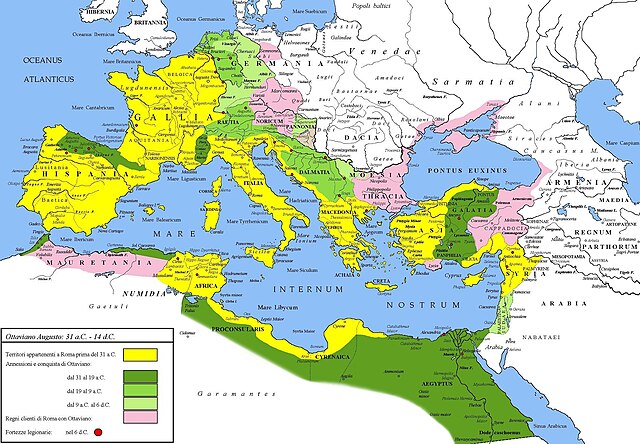Africa was a Roman province on the northern coast of the continent of Africa. It was established in 146 BC, following the Roman Republic's conquest of Carthage in the Third Punic War. It roughly comprised the territory of present-day Tunisia, the northeast of Algeria, and the coast of western Libya along the Gulf of Sidra. The territory was originally and still is inhabited by Berbers, known in Latin as the Mauri, indigenous to all of North Africa west of Egypt. In the 9th century BC, Semitic-speaking Phoenicians from West Asia built settlements along the coast of the Mediterranean Sea to facilitate shipping. Carthage, rising to prominence in the 8th century BC, became the predominant of these.
The amphitheatre of Thysdrus (modern El Djem)
Roman as of Hadrian, 136 AD. An allegory of Africa wearing an elephant headdress is depicted on the reverse.
Juba II, king of Mauretania.
Triumph of Poseidon and Amphitrite showing the couple in procession, detail of a vast mosaic from Cirta, Roman Africa (c. 315–325 AD, now at the Louvre)
The Roman provinces were the administrative regions of Ancient Rome outside Roman Italy that were controlled by the Romans under the Roman Republic and later the Roman Empire. Each province was ruled by a Roman appointed as governor.
Roman Empire under Augustus (31 BC – AD 14), showing the empire as of 31 BC in yellow, additions to 19 BC in dark green, additions in 9 BC in light green, and additions to AD 6 in pale green. Client states in mauve.





